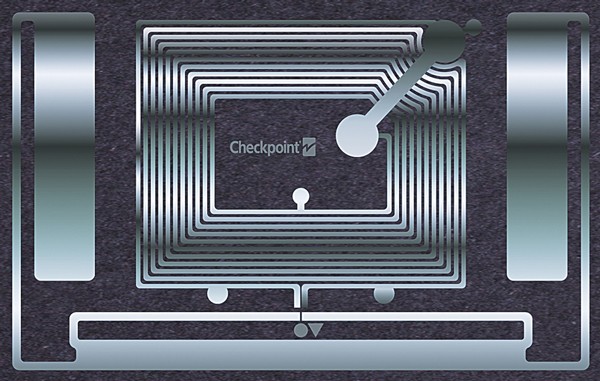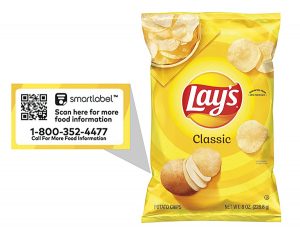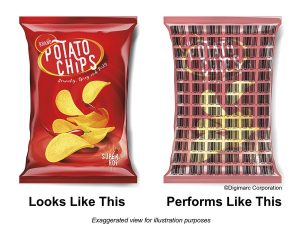
A key takeaway of mid-November event, was the growing commitment by brands to develop packaging which communicates, not only with consumers but all along the supply chain, to ensure security and efficiency. This special report by Andrew Manly, communications director of AIPIA discussed how smart packaging technology is spreading across the packaging landscape.
The Active & Intelligent Packaging Industry Association (AIPIA) held its main event of the year in mid-November with the overarching theme of the Digitization of Packaging with a special focus on connected packaging and supply chain issues. With 36 speakers in a packed 5-hour virtual program, the topics covered everything from smart labels, combining NFC/RFID, data access and management, to active materials and tags.
A key takeaway, according to AIPIA, was the growing commitment by brands to develop packaging which communicates, not only with consumers but all along the supply chain, to ensure security and efficiency. Other important outcomes were the growth of augmented reality and the need to communicate across all stakeholders, even within individual companies, in a common ‘language’ and how to get across key messages about the benefits of these technologies. Standardization and stability of technological developments, to enable scalable solutions, was also a talking point.

“The industry is now more confident about discussing the challenges it faces, as well as highlighting the obvious progress it has made,” said AIPIA managing director Eef de Ferrante. “In a perverse way the pandemic has enabled the sector to highlight the need for stronger supply chain management, better customer and internal communication, contactless transactions and the dangers of counterfeiting in the world of on line purchasing and eCommerce.”
“But we must recognize that the take up of Smart Packaging is still slower than we would expect and address the reasons why. Several presentations and discussion rooms at the event did just that. Also, l am thrilled to announce we are working with Accenture, the global consulting group, to develop ways to accelerate the implementation of our technology and make more noise about it,” he added.
In her opening address to the Congress, Accenture’s Anita Etrati explained that the consultancy will be publishing its Smart Packaging Point of View – Transforming the ordinary with smart connected packaging, in the coming months. It will be in collaboration with AIPIA and its members and focus on the misconceptions companies hold around smart connected packaging and the steps they need to take to succeed.
consultancy will be publishing its Smart Packaging Point of View – Transforming the ordinary with smart connected packaging, in the coming months. It will be in collaboration with AIPIA and its members and focus on the misconceptions companies hold around smart connected packaging and the steps they need to take to succeed.
“Smart connected packaging provides digital touchpoints at every stage of the product lifecycle. It helps brands deliver exceptional customer experiences that delight and achieve ongoing operational value. And it involves an ecosystem of powerful technologies, which drive new modes of product interactivity,” explained Etrati.
Telling the story of how his company has evolved the SmartLabel was the key theme of John Phillips, SVP, Customer Supply Chain & Global Go-To-Market at PepsiCo and one of its main platform development partners, Scanbuy in the opening keynote. He explained how the SmartLabel initiative started out in the USA as a customer transparency project to offer far more information digitally than could be put on a normal label. It has evolved to now include information such as regulatory information and go beyond that by creating genuinely smart packaging which can have ‘curated content’ for the individual brand and product via what PepsiCo is calling an Intermediate Menu.
GSI Digital Code likely to replace Unique Product Codes
The 20 or so companies working on the SmartLabel project through the Consumer Brands Association anticipate that in 5 to 7 years the unique product codes (UPC) will be replaced by a QR code which will have all the functionality of the UPC plus everything else a smart pack requires. The project anticipates that the GSI Digital Code will be the prime vehicle for this rollout.
Maryann Moschides, Scanbuy’s CMO and general manager explained that its digital platform, which is already in use by many major brands to provide tailored information for consumers, has seen a dramatic pandemic effect, with 162% growth in unique consumers engaging with QR codes between January 2019 and October 2021. In addition, the company processed 19% more unique user scans between January and September 2021 and from Q3 2020 to Q3 2021 saw a 29% increase in packaging engagement. Phillips said in the last six months, SmartLabel pages on PepsiCo brands had received 5.6 million visits, a strong upward trend.
This is probably not just accounted for by the pandemic, as consumers become much more familiar with accessing information via smartphones. Indeed a recent US survey by Acosta found that 6 in 10 shoppers are now comfortable using digital tools while shopping.
Sustainable traceability and patient compliance for pharma
With pharmaceutical traceability and patient compliance high on the agenda, the talk given by Roberto Lattuada, CEO of myHealthbox had a topical subject, which echoed the sustainability issues too. The patient information leaflet is going digital he proposed. The objective is to make the use of medicines safer by offering up-to-date instructions electronically (so no need for a paper leaflet) available on any device.
While various regions are at different stages of the transition to electronic product information (EPI) the need for pharma companies globally to have a strategy in place to transition from paper to this format is imperative, he contends. Europe is well down the road in this respect with Japan not far behind, while USA and Canada are in the initial stages.
The benefits of this truly connected packaging idea are very strong, he claims, greener, safer and smarter – so information can be updated easily and in multi-language versions. In one of the two case studies, he offered a company was able to achieve considerable cost saving by only having a local market language leaflet (printed on recyclable paper) with all other languages available via the EPI.
Can smart and sustainable co-exit?
Matt Morris sustainability lead and Pari Gaikwad, head of Digital, both from Cambridge Design Partnership, chose Smart Sustainable Packaging Innovation as their subject. Pari opened by posing the question ‘Can Smart and Sustainable co-exist’? Matt showed an example of where even ‘legacy’ packaging is under review and how the UK’s largest food retailer, Tesco’s pack for chicken proteins, has been changed from black plastic to light gray to make it easier to sort in the recycling chain. But with an RFID tag attached to a standard water bottle adding 10% to the carbon footprint of the pack, how can brands sell the concept of using tags to their stakeholders, he asked?
The answer is to focus on the intersection between smart and sustainable, says CDP and demonstrate the benefits that bring beyond just the packaging itself. An obvious winner in the current Covid-19 world is the use of traceability and tracking devices to monitor vaccine distribution. Another clear benefit is to use connected packaging to encourage sustainable behaviour, such as improved medicine compliance and better recycling habits to reduce waste of both the product and the pack. An example of encouraging re-use is ClubZero a very utilitarian drink container using an RFID tag to track the containers and make it convenient to drop them off at any of a number of recycling points. It works across retailers, so ideal for smaller outlets in high-density locations.
The presentation concluded by being clear that different packs and products would require different smart technology solutions and, in the sustainability arena, the trick is to choose the most low impact solution for the given requirement. In addition, advances in smart packaging technologies, such as printed integrated circuits can greatly reduce the carbon footprint when compared to silicon-based RFID tags. Overall Matt ended this talk with one of the more memorable comments of the event – smart packaging and sustainable packaging are not necessarily oxymoronic!
The founder of Specright, Matthew Wright talked about the Transition of Packaging to a digital world through data. He spoke about the current situation where different components of the package for a single product all can have different specifications in many different silos, making interoperability very hard. The explosion in the number and variety of SKUs, increased regulatory and sustainability requirements, lack of visibility in the supply chain and the need for advanced supply chain analytics make it imperative to have common, digitized specification data.
His software solution, he claims, enables the digitization of the packaging value chain by digitizing the specifications, linking these across the supply chain network, layering analytics, workflows and approvals and finally networking the results to allow sharing and updating across all the stakeholders. Accrued benefits include greatly reducing the ‘on-boarding’ of a new supplier or meeting spikes in demand for the product. One client, a major cosmetics company, has been able to progress its 5-year sustainability commitment by benchmarking product and packaging material used, measuring progress and executing necessary changes.
The Holy Grail 2.0 project
Several presentations mentioned the Holy Grail 2.0 project which was initiated by a group of 140 companies covering both suppliers and users, led by Proctor & Gamble, to greatly increase the recyclability of plastics by identifying different types of material through a digital watermarking process. Larry Logan, packaging evangelist at Digimarc, which has developed the watermark technology, provided delegates with an update on the project.
Following successful validation of the technology in 2020, semi-industrial testing has been going on at two sites this year involving more than 232 SKUs and 120,000 samples, including HDPE and PET bottles and 2D labels and 3D. Results of these trials are due shortly. The next phase is full industrial testing in 2022, at sites in France and Germany. A link to the semi-industrial trial test results has been available at https://www.digitalwatermarks.eu/openhouses since 18 November.
During the Congress two other recycling initiatives were covered. Johan Kerver, chief executive officer of Filigrade Sustainable Watermarks outlined CurvCode, a European watermarking technology for sorting food and non-food plastics. Ivan Gonzalez, chief executive officer of Recycl3R introduced a Global Alliance to promote a Packaging Digital Deposit and Refund System (Digital DRS) through serialised and connected packaging.
With such a diverse range of Smart Packaging technologies explored across the Congress, including the impact of combined NFC + RAIN RFID labels (Checkpoint Systems), battery-free Bluetooth tags (Wiliot), active packaging for food and pharmaceutical safety (Aptar CSP and ITENE), Blockchain (Magic Ad and 3D) as well as several outstanding contributions on Traceability (Kezzler/Arviem, Systech, Digimarc) it is clear that the Digitization of Packaging (supply chains in particular) is continuing at an increasingly fast pace.
Brand owners must focus on the benefits of these technologies and where they can fit into their product portfolio-landscape – to meet the increasing demands for greater customer transparency and engagement as well as to improve traceability and security. There is a compelling case emerging that, rather than being a hindrance to sustainability, smart packaging can be a real help.
Summing up the Congress Eef de Ferrante said, “It is very encouraging that the pace of development and innovation and the levels of interest in smart packaging technology seems to have increased again. While implementation may have been deflected by other issues, such as reformulating of packs and products to meet sustainability goals, there are signs that we are very much back on the Brand Owners’ agenda. We look forward to getting back to a larger, dynamic live event in 2022!”




